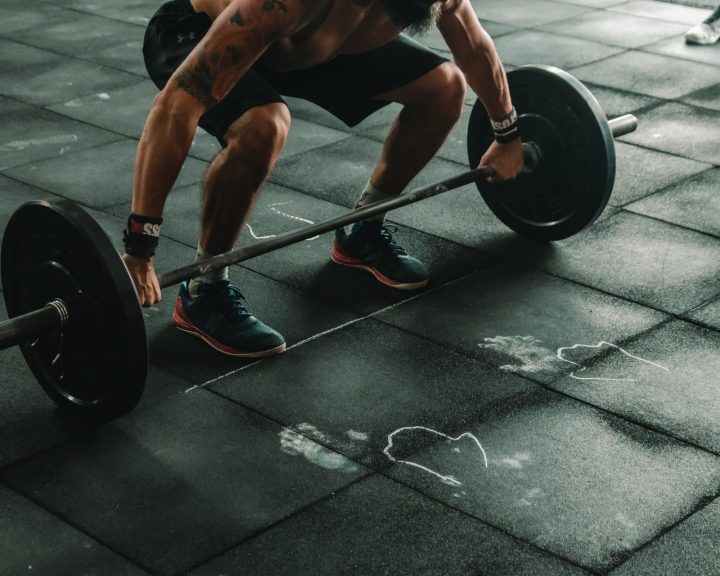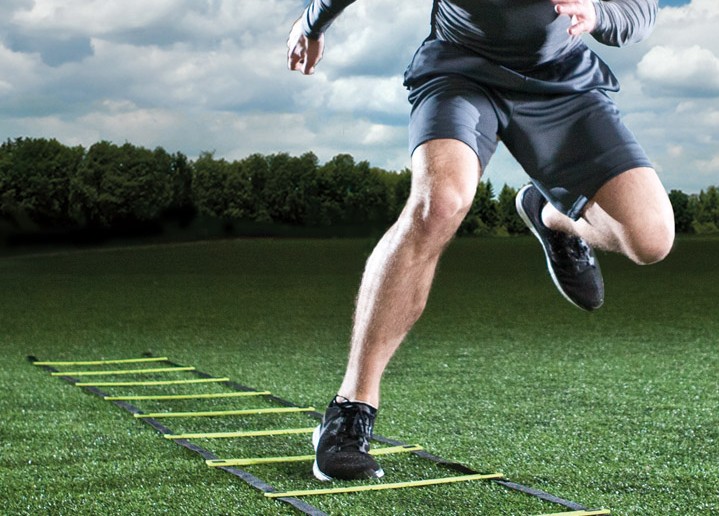The principle of specificity rules the gains we make from strength and conditioning. Essentially, this principle states that your training has to be dictated by your goals. For example, you can do all the leg presses that you want but they won’t improve your bench press. It applies to the muscles and motions trained, the energy systems trained, and some believe it applies to the speed of movement trained. For example, if you lift weights at slow speeds then you become stronger at slow speeds – but not necessarily at faster ones.
If this principle is true, it is extremely important in the conditioning of athletes because athletes move at fast speeds and sports take place at fast speeds. This would reinforce the need to train explosively in the weight room.
The challenge is that the research is mixed on this one. Most of the studies looking at this use isokinetic equipment that athletic programs don’t have access to. Some of the studies that have demonstrated this have an interesting study design and essentially mean comparing apples to oranges. Others are misinterpreted.
For example, Kanehisa and Miyashita published a study in 1983 using isokinetic equipment that had a slow group (3×10@ 1.05 radians/second), an intermediate group (3×20 @ 3.14 radians/second), and a fast group (3×50 @ 5.24 radians/second). The numbers in parenthesis represent sets x repetitions. Their subjects trained six times per week for eight weeks.
When comparing slow to fast, the slow group got stronger at the slow speeds. The fast group got faster at fast speeds. Seems to validate the concept right? Here’s the problem. The fast group lost strength at the slow speeds. The intermediate group made the best strength gains at fast speeds!
So this shows you that there are some challenges with the research in this area.
The latest issue of the International Journal of Sports Medicine looks at velocity specificity using squats and free weights. The authors have two groups that they are studying. Both groups did the exact same resistance training protocol on the back squat with the exception of the velocity of the movement. The groups trained three times per week for six weeks on a program that gradually increased the percentage of 1-RM that the subjects trained at. Over the six weeks, the high velocity group trained at somewhere between .63 and .94 meters per second (speed of movement decreased as the % of 1-RM increased). The half velocity group trained at between .34 and .51 meters per second. The subjects were tested on their squat 1-RM, counter-movement jump, 10 meter sprint, and 20 meter sprint time.
At the end of six weeks:
- The maximum velocity group improved their counter-movement jump by almost 9%, compared to almost 2.5% for the half velocity group.
- The maximum velocity group improved their 10 meter sprint time by almost 3%, compared to a little over 1% for the half velocity group.
- Both groups improved their 20 meter sprint time by a little over 1.5%.
- The maximum velocity group improved their 1-RM back squat by 18%, compared to almost 10% for the half velocity group.
There’s a lot more to the study than just the above. However, the above is enough to indicate that in this context the higher speed training on the squat seems to be more beneficial to 1-RM squat strength, the counter-movement jump, and short sprints than training at slower speeds. Now, it needs to be kept in perspective that the subjects were college students with some strength training experience (they could squat on average 125% of body weight). It’s unclear if these results would apply to stronger, trained athletes.
The nature of the subjects brings up a second issue. Athletes have been training explosively for a period of time, in other words they have a training history with the concept. This may have been in the weight room (Olympic lifts), via plyometrics, via sprints, via agility drills, or just by training for their sport. College student subjects may not have this training history. This means that when it comes to explosive training, they could be relatively untrained – i.e. any training stimulus may result in gains.
When it comes to these kinds of studies, there’s one other wrinkle to consider besides the subjects and their training history. These studies do not represent how athletes train in the real world. In other words, athletes don’t train with one exercise. These back squats might be part of a training session that includes cleans, pulls, Romanian deadlifts, and plyometrics or sprints. There may be two to five other training sessions during the week on top of sport practices and competitions. So singling out one exercise as the smoking gun for high velocity training is okay when studying college students, but the subjects and the training protocols mean that the results don’t necessarily have a lot of application to athletes.
References:
Kanehisa, H. and Miyashita, M. (1983). Specificity of velocity in strength training. European Journal of Applied Physiology, 52: 104-106.
Pareja-Blanco, F., Rodriguez-Rosell, D., Sanchez-Medina, L., Gorostiaga, E.M., and Gonzalez-Badillo, J.J. (2014). Effect of movement velocity during resistance training on neuromuscular performance. International Journal of Sports Medicine, 35: 916-924.





1 thought on “Strength Training And Velocity Specificity”
The weight room is for building strength, power and muscle mass. Each of those should be separate goals with the appropriate training program. The development of speed is not a direct product of the weigh room it is a by product. Speed drills develop speed. If though the proper development of strength and power in the weight room you are able to increase ground force production you should increase speed.
Light weights used at fast rate will not challenge your fast twitch muscle fiber to increase strength it will only challenge slow twitch an increase endurance. Most great sprinter have big Squats and BP along with Power Cleans
Comments are closed.